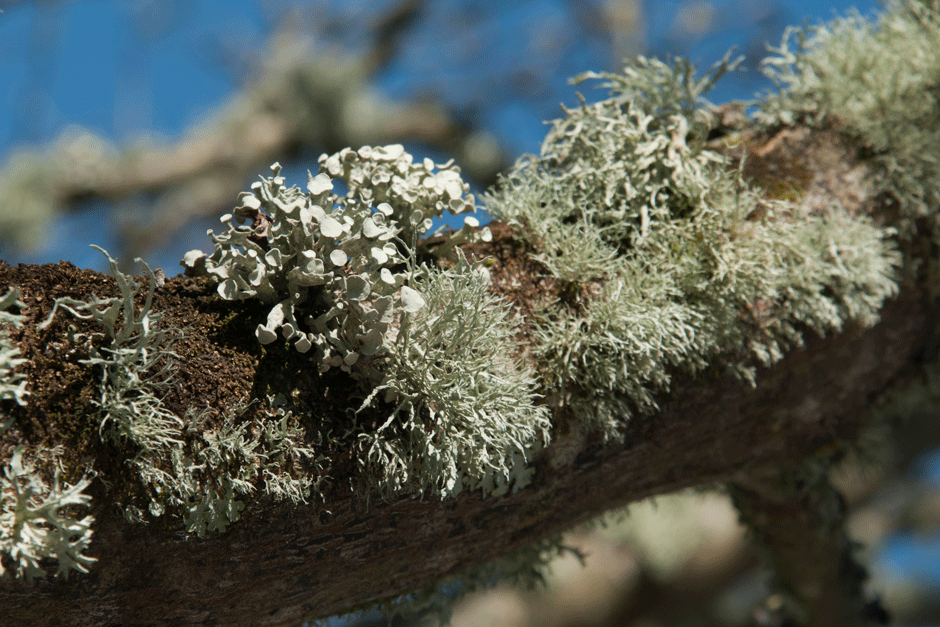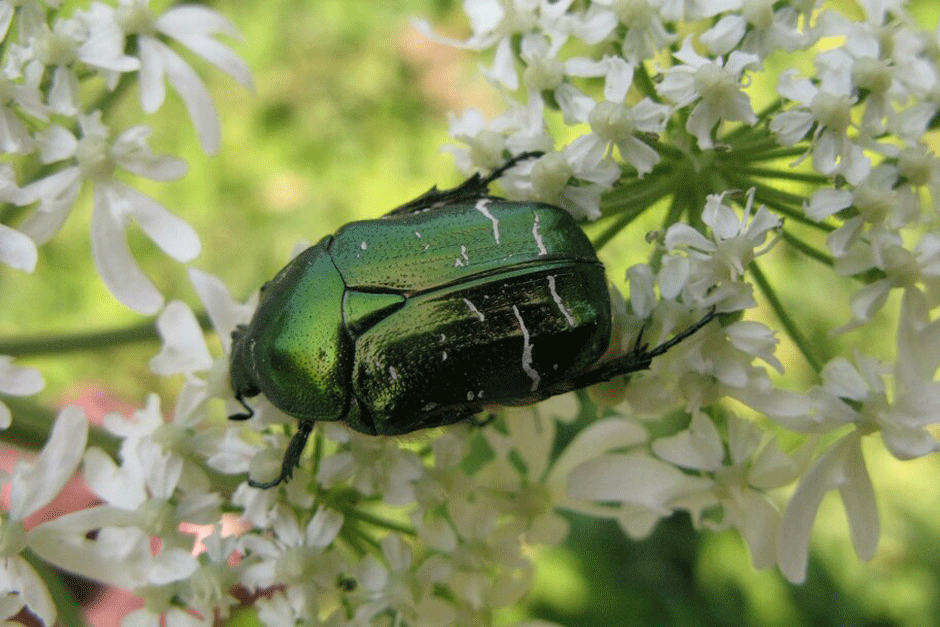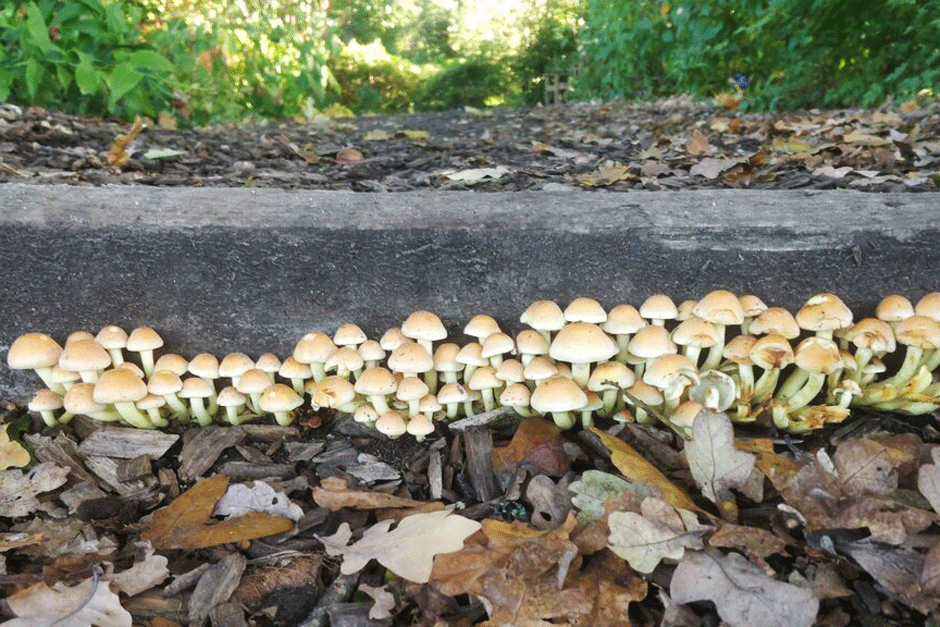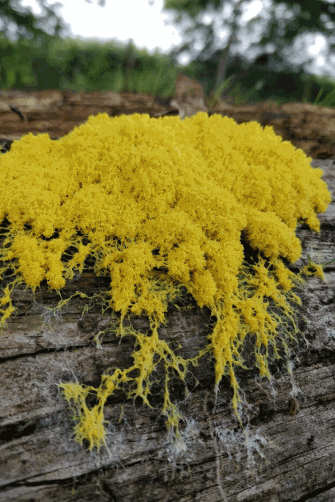RHS scientists reveal the top 10 most-asked-about beneficial species reported by UK gardeners in 2022
 The RHS Science team has published a list of most-asked-about beneficial garden biodiversity for the first time, to celebrate the wildlife and other organisms found in our gardens and highlight how encouraging more species into our outdoor spaces can bring multiple benefits.
The RHS Science team has published a list of most-asked-about beneficial garden biodiversity for the first time, to celebrate the wildlife and other organisms found in our gardens and highlight how encouraging more species into our outdoor spaces can bring multiple benefits.
The list is drawn from enquiries to the RHS Gardening Advice Service, which gets thousands of queries from gardeners every year.
Top 10 most-asked-about beneficial garden organisms of 2022
|
|
Most-asked-about beneficial garden organisms
|
|
1
|
Lichens
|
|
2
|
Native ladybirds
|
|
3
|
Pollinators - and how to encourage them
|
|
4
|
Solitary bees (aculeate Hymenoptera)
|
|
5
|
Sulphur tuft fungi (Hypholoma fasciculare)
|
|
6
|
Slime moulds
|
|
6=
|
Rose chafer beetle (Cetonia aurata)
|
|
8
|
Ink cap mushrooms (Coprinoids)
|
|
8=
|
Hoverflies (Syrphidae)
|
|
8=
|
Social wasps (Vespidae)
|
Topping the list are lichens, which can often be found growing on trees or shrubs. Lichens provide food for other garden wildlife and create new habitats by providing shelter for invertebrates and nesting materials for birds and mammals.
Lichens are often associated with good air quality. They carry out photosynthesis to capture atmospheric carbon, and certain lichens also absorb atmospheric nitrogen compounds, which are common pollutants. Lichens regulate water and humidity levels by soaking up moisture during wet weather and then slowly releasing it as water vapour.
The insects at the top of the list, pollinators and ladybirds, will probably be the most familiar as being beneficial to gardeners. Since 2012 the RHS has produced the Plants for Pollinators list, featuring plants that are very attractive to and provide food for pollinators such as bees and butterflies.
Ladybirds primarily eat aphids, so have long been considered a friend of gardeners. It is said that a single ladybird can eat 50 aphids a day, or around 5,000 in a lifetime!
 Though its name may suggest a less-than-helpful garden visitor, the eye-catching rose chafer beetle (Cetonia aurata) should be welcomed. This bright metallic green beetle often appears from May, and its larvae feed on dead and decaying matter, assisting with composting in the garden.
Though its name may suggest a less-than-helpful garden visitor, the eye-catching rose chafer beetle (Cetonia aurata) should be welcomed. This bright metallic green beetle often appears from May, and its larvae feed on dead and decaying matter, assisting with composting in the garden.
Social wasps – often much maligned – are vital garden predators, feeding on everything from caterpillars to green fly. Adult hoverflies are often wasp mimics, and have no sting, but are vital pollinators. The larvae of many hoverfly species predate blackfly and other aphids.
Beneficial fungi also appear in multiple slots in the top 10, emphasising a growing interest in fungi and their role in ecosystems. Around 1,000 visitors engaged with activities to celebrate UK Fungus Day at RHS Garden Wisley in October 2022 – more than ever before – attending fungi walks and talks, and learning how to inoculate logs with fungal mycelium.

Sulphur tuft fungi (pictured above) and inkcap mushrooms are often mistaken for the damaging tree disease honey fungus, as they appear in similar groups in the autumn. However, these beneficial species help recycle dead wood and support plant health. They release micronutrients and humic acid, which enrich soils and help to retain moisture. The presence of fungal mycelium in soil also improves its structure.
 By adding woody mulch or retaining pruning cuttings from healthy trees, gardeners can encourage beneficial fungi in their gardens.
By adding woody mulch or retaining pruning cuttings from healthy trees, gardeners can encourage beneficial fungi in their gardens.
Slime moulds are single-celled organisms that fuse together to create a supergroup, which moves as a unit in search of food.
These moulds eat the bacteria that decompose plant material, and in turn are eaten by invertebrates such as nematodes, contributing to the nutrient cycling in a garden.
RHS Plant Pathologist Liz Beal said: “We have seen a huge increase in gardeners wanting to find out more about the organisms they can encourage into their garden to naturally ward off the species that can be more damaging to their plants.
“Many of the gardeners that get in touch are also very curious about the wildlife they find and what they do, rather than looking for ways to get rid of them.
A healthy garden ecosystem is home to a wide variety of wildlife, and we hope this list will help celebrate some of the friendly garden species that bring a whole host of benefits to our plots and the wider environment.”
variety of wildlife, and we hope this list will help celebrate some of the friendly garden species that bring a whole host of benefits to our plots and the wider environment.”
The RHS is committed to becoming biodiversity positive by 2025, as set out in our 2021 Sustainability Strategy. As part of this, we encourage gardeners to focus on the benefits of having a biodiverse garden, the contribution each species makes to a healthy ecosystem, and the ways in which increased biodiversity can prevent any one species becoming too prevalent and harming plants.
RHS members get free access to the charity’s one-to-one Gardening Advice Service, available by phone or email. Find out more about becoming a member here.
RHS advice pages are available for everyone for further information.

